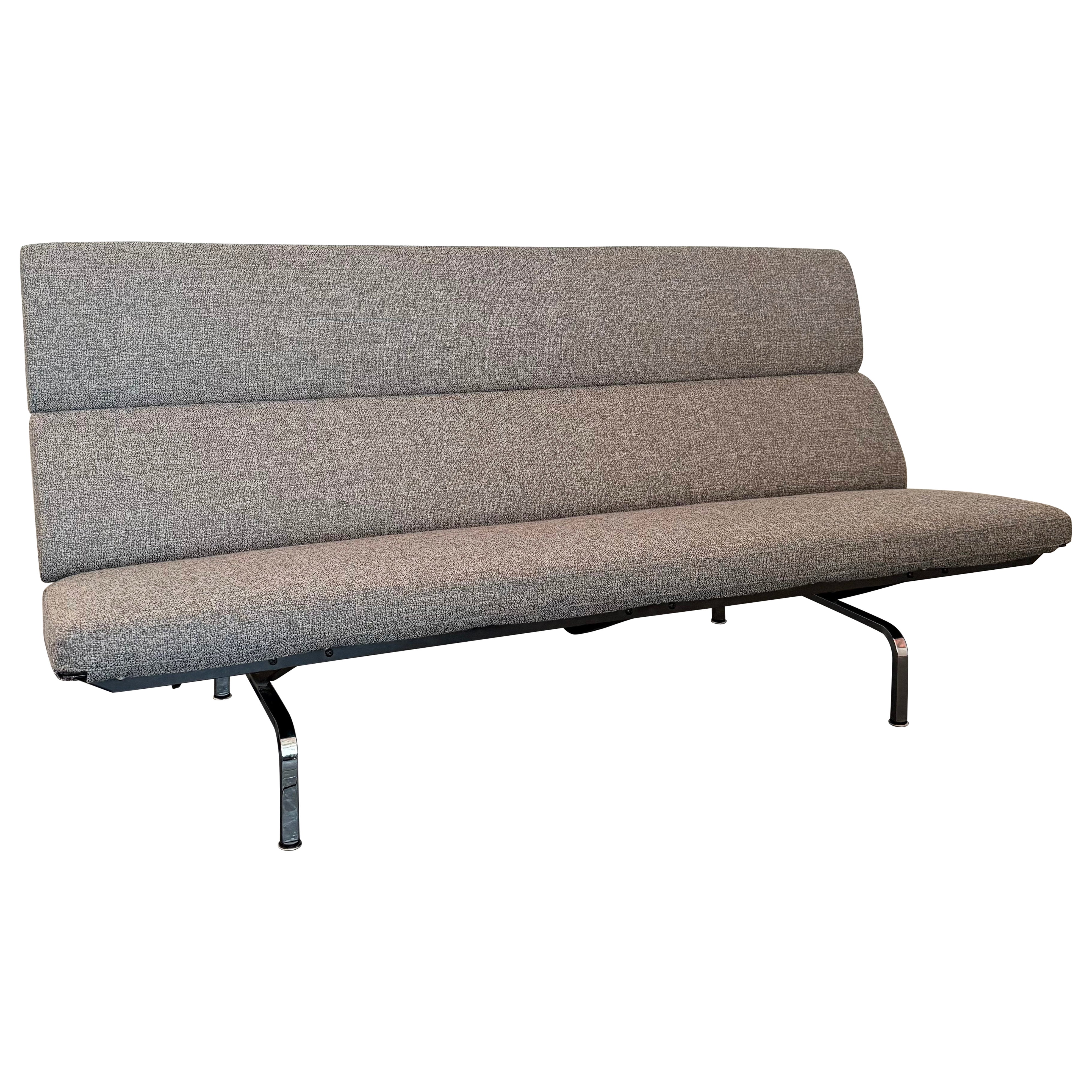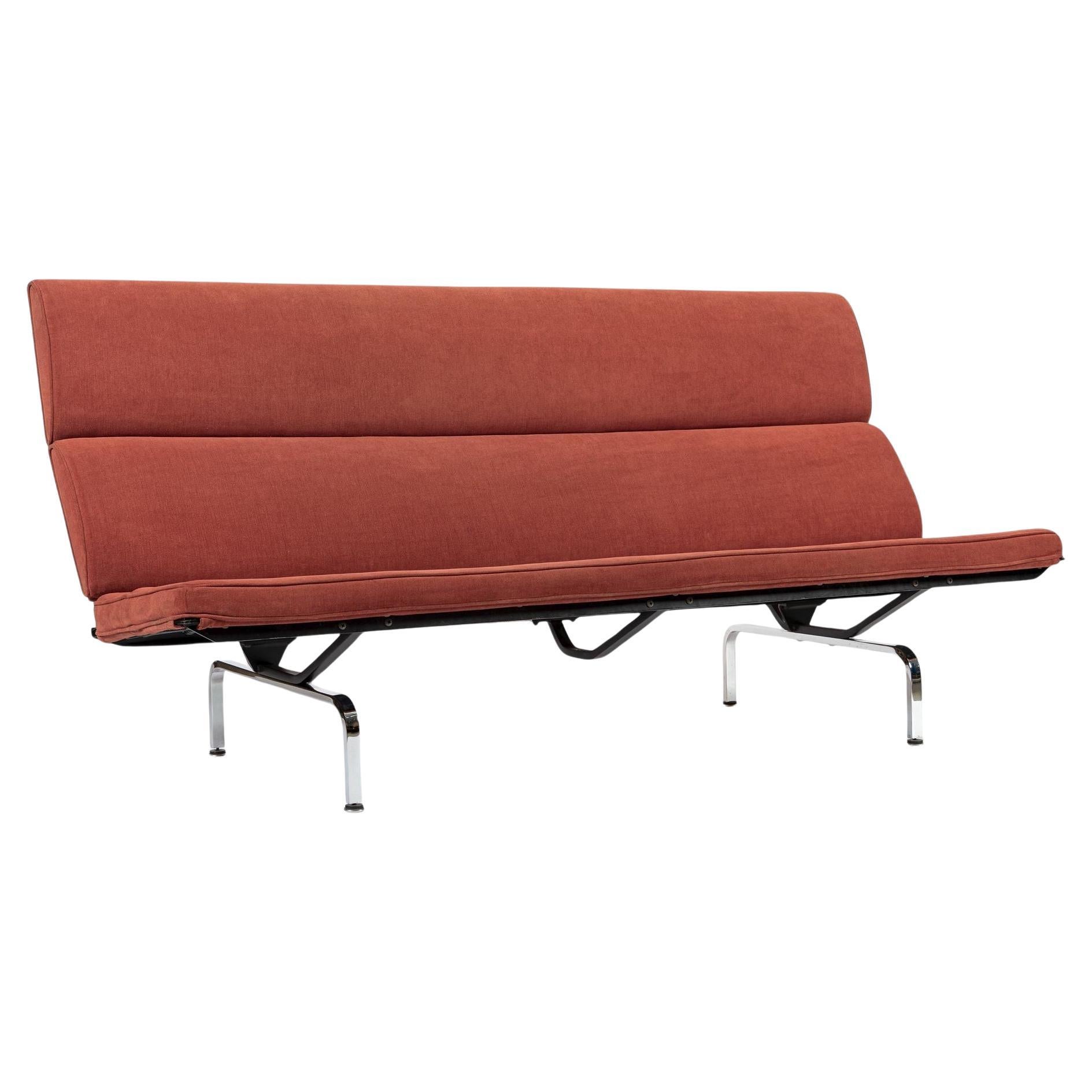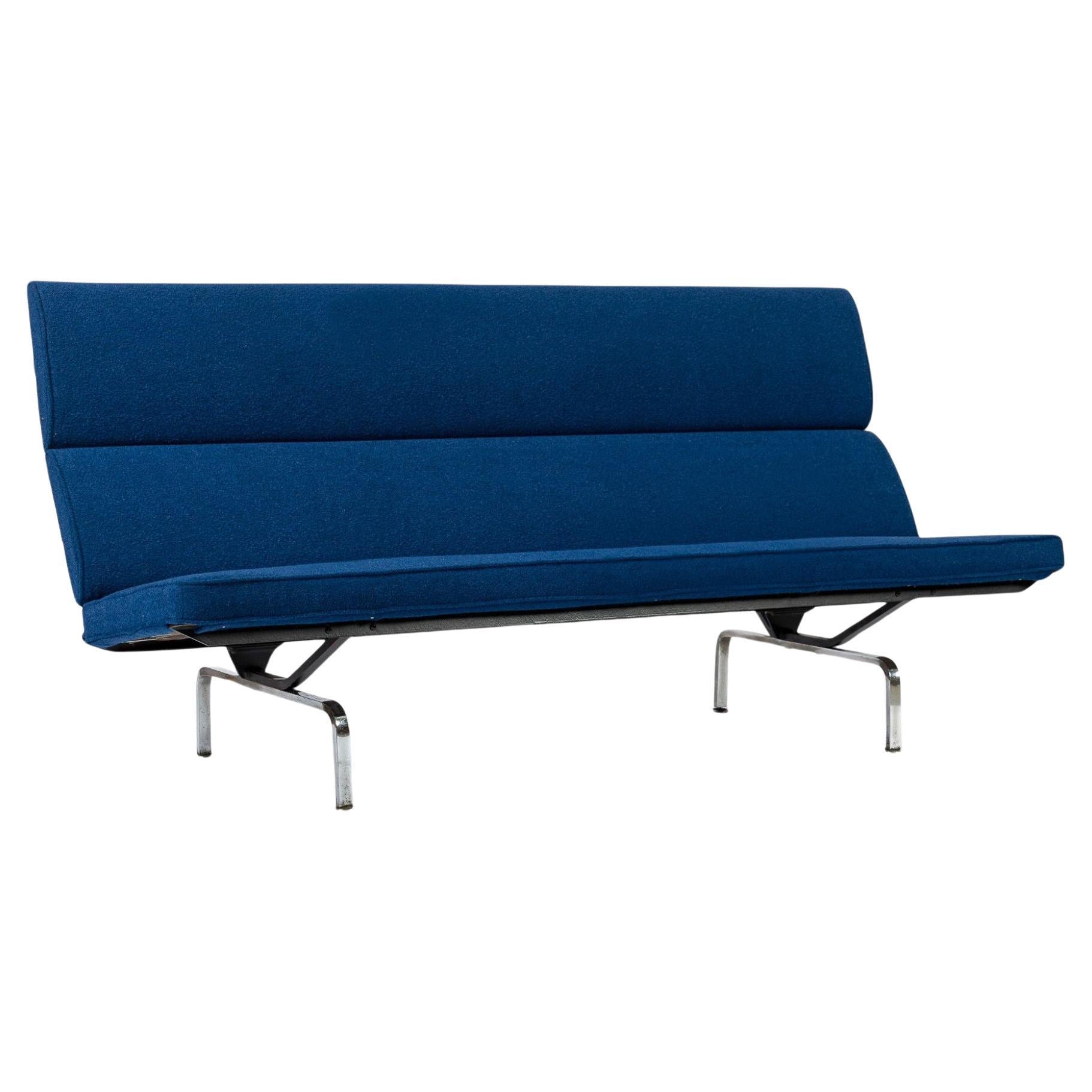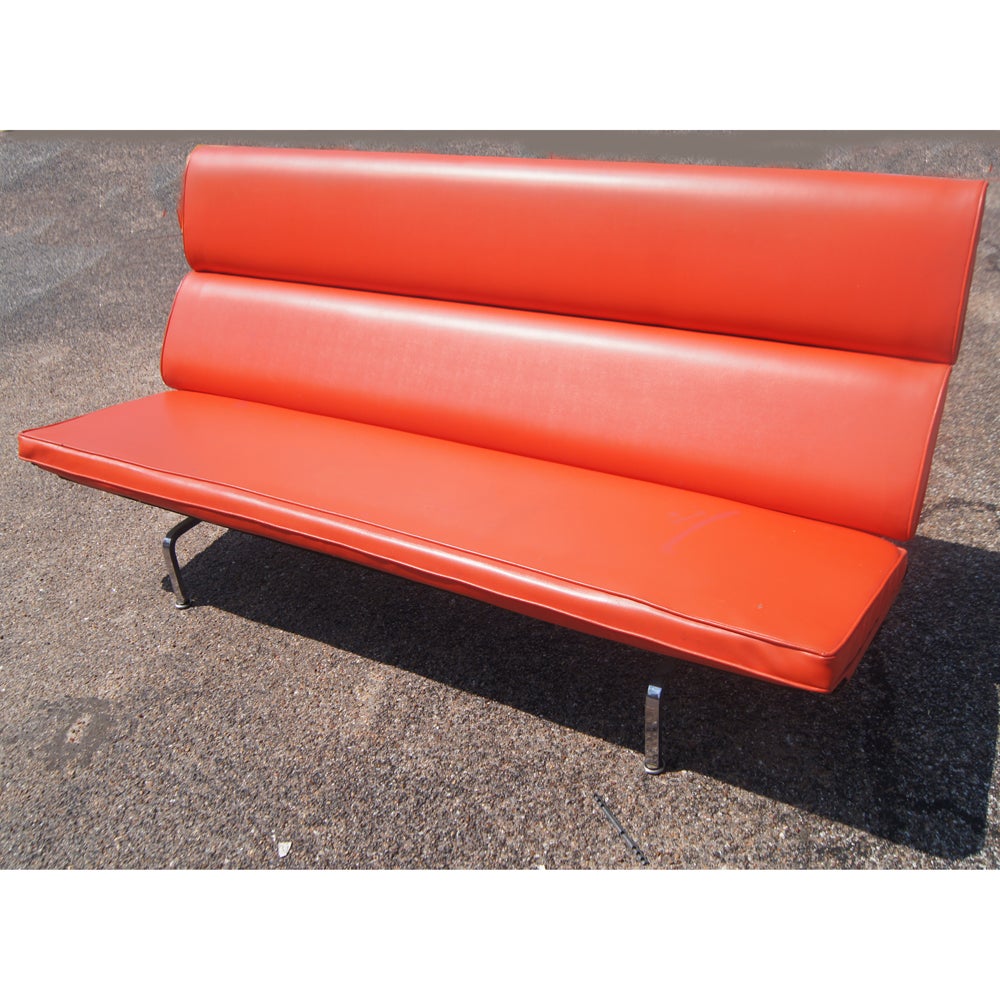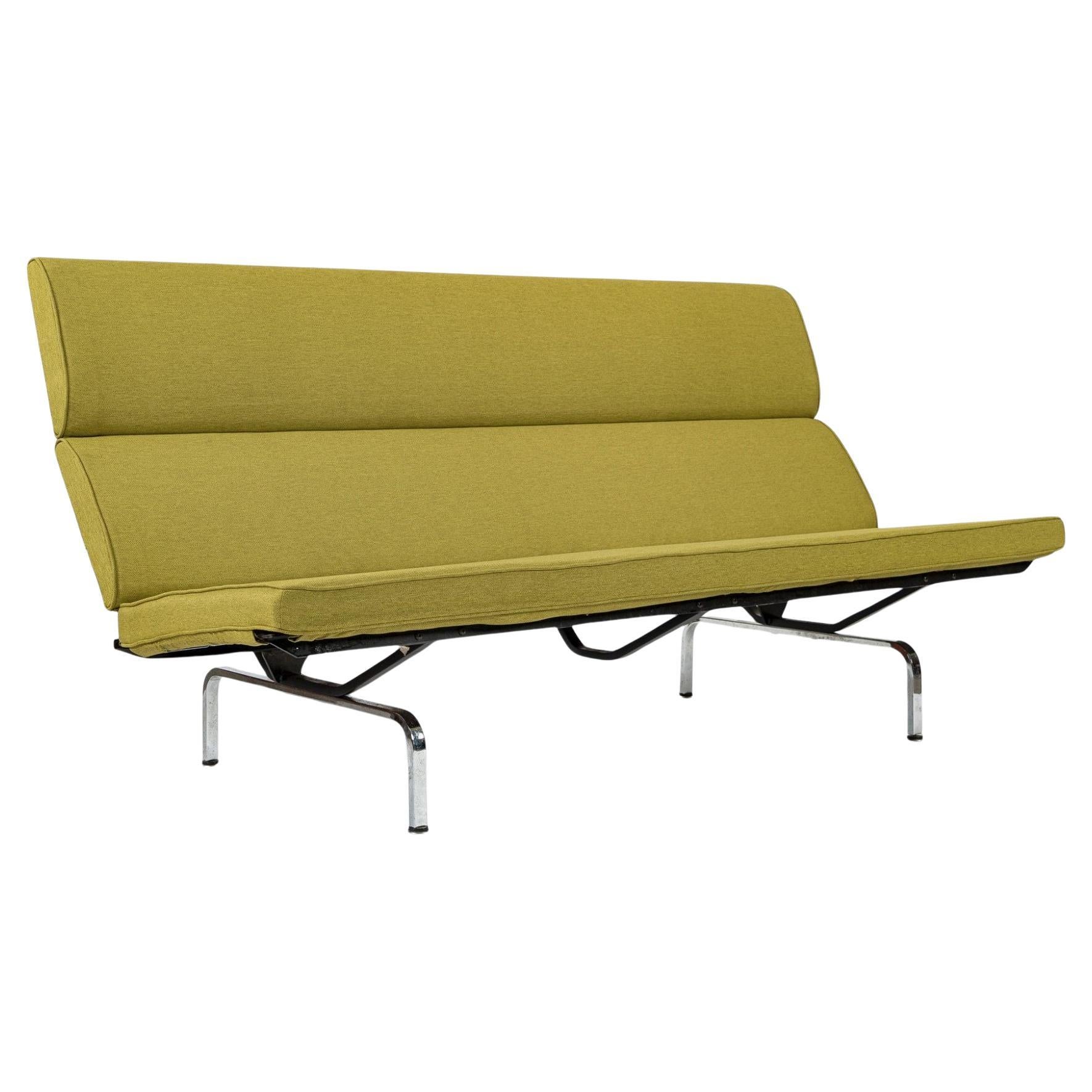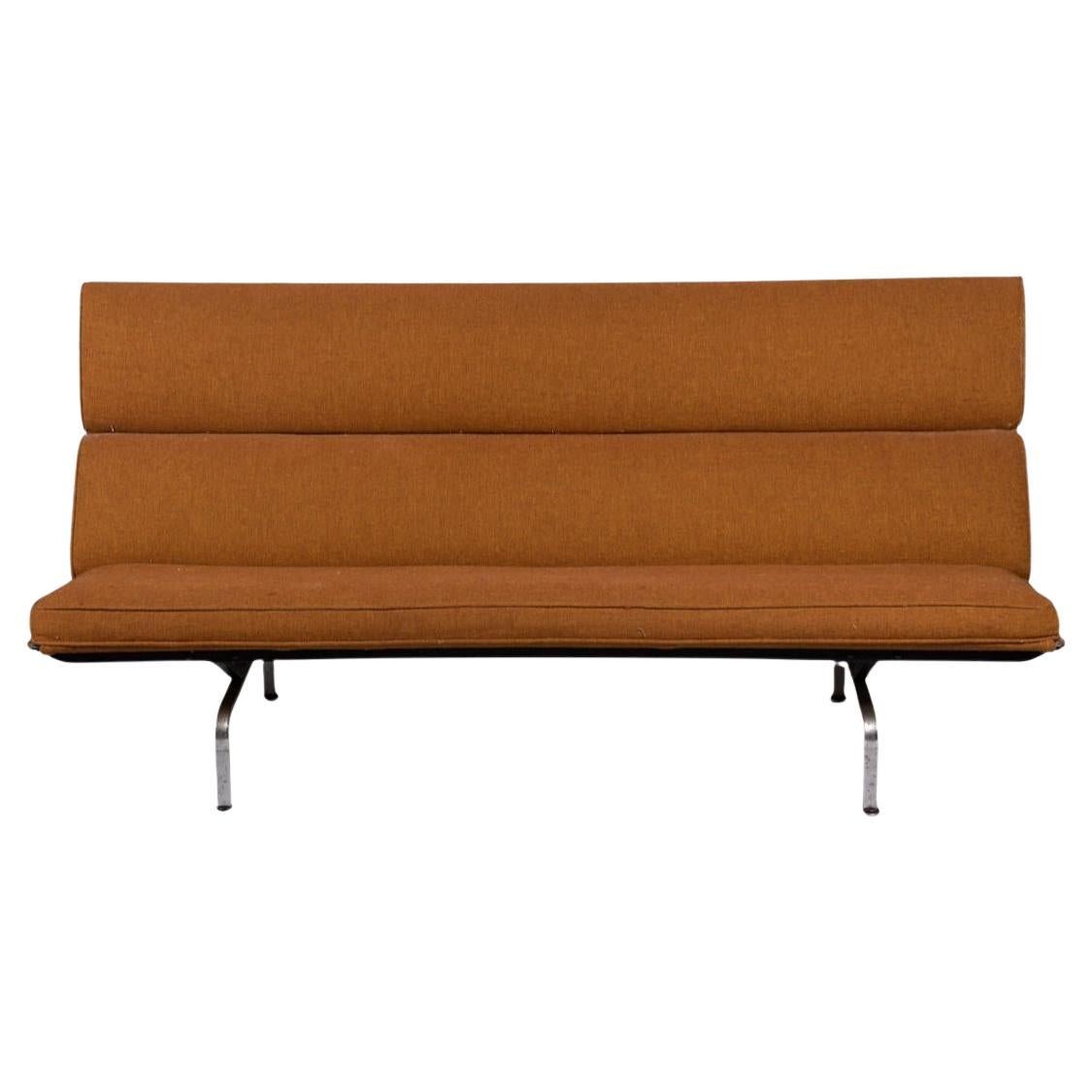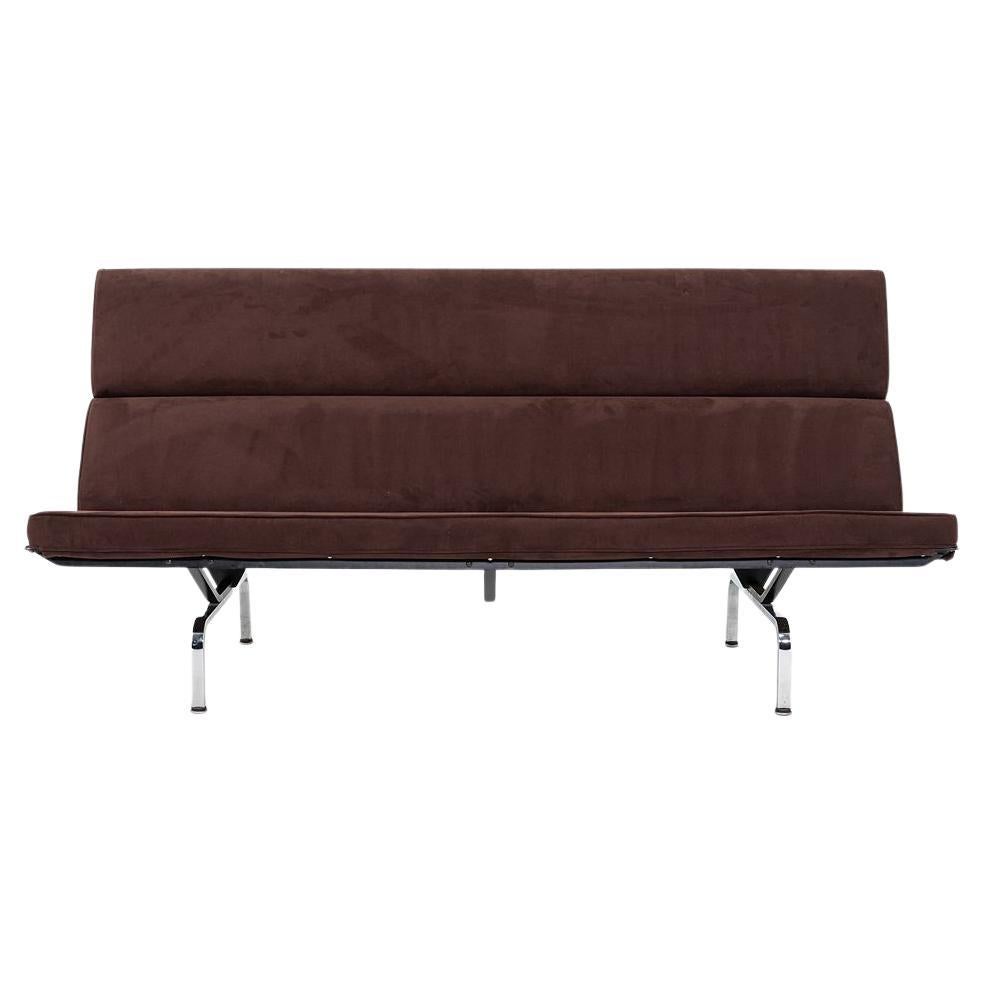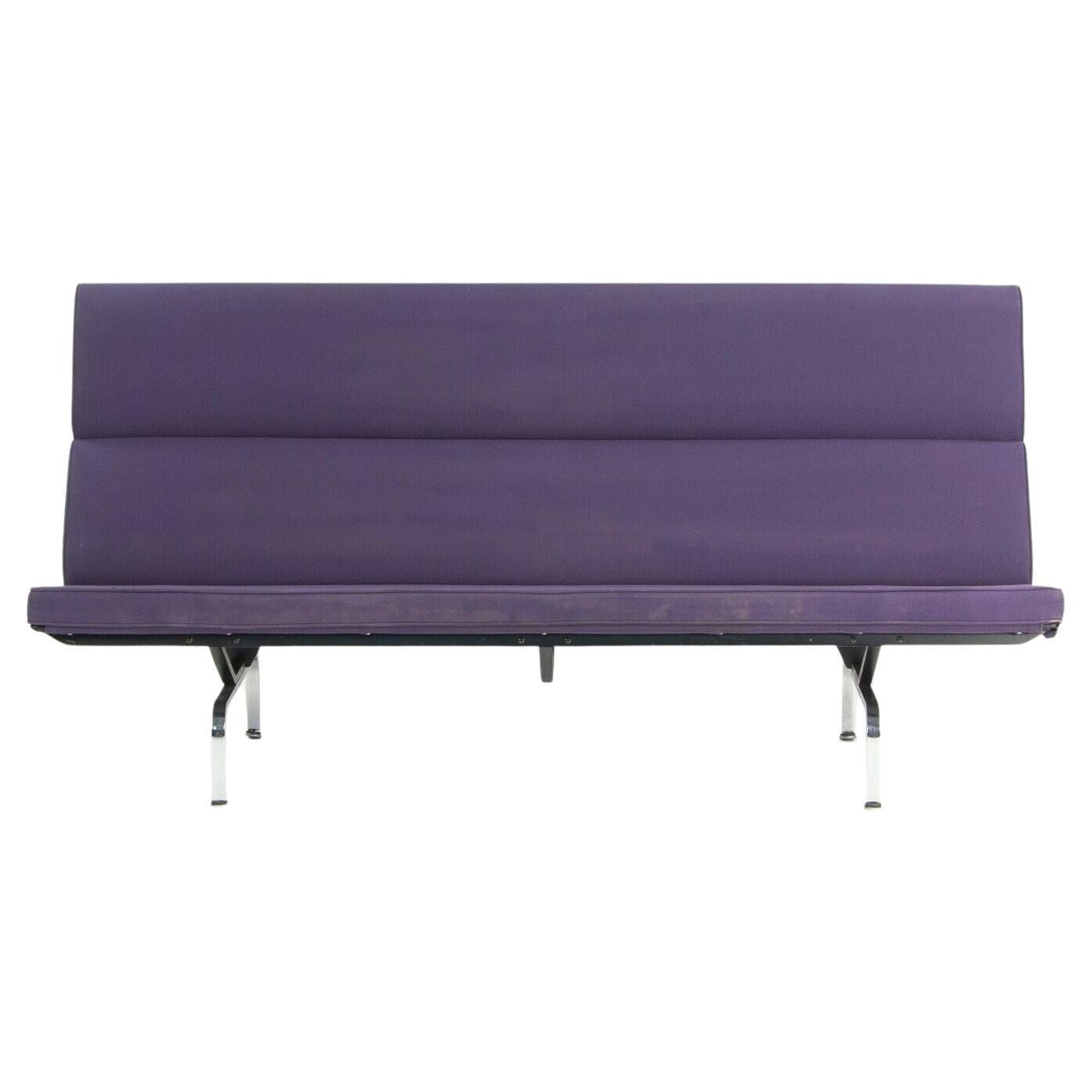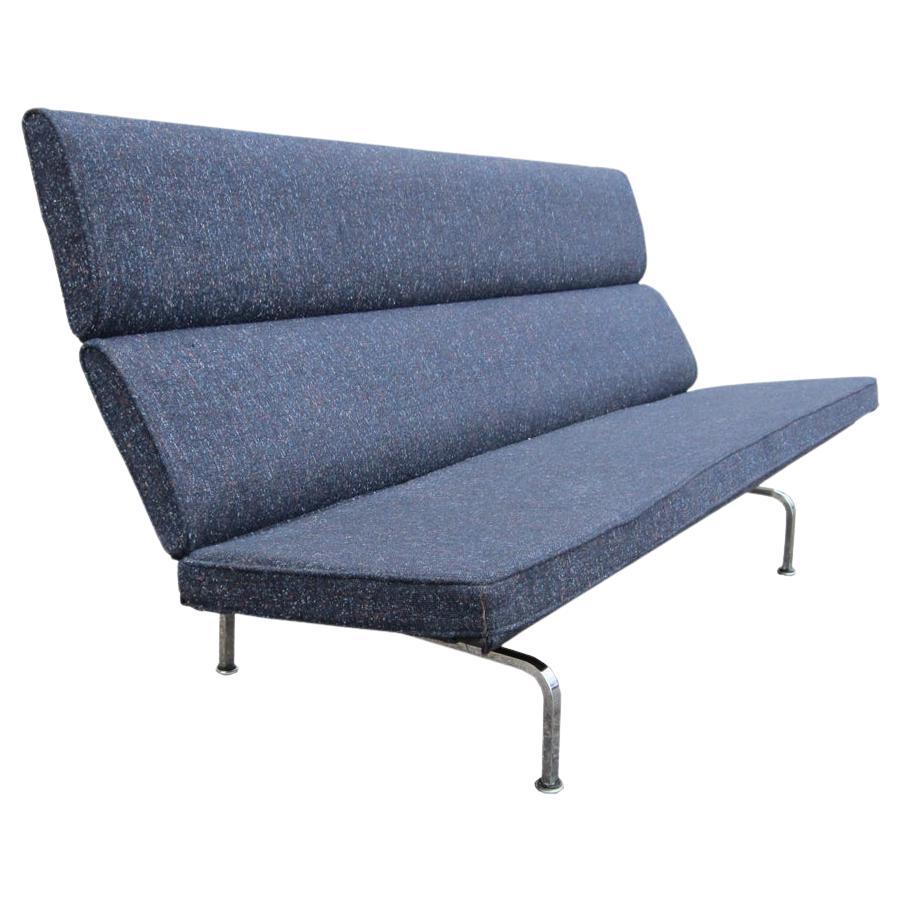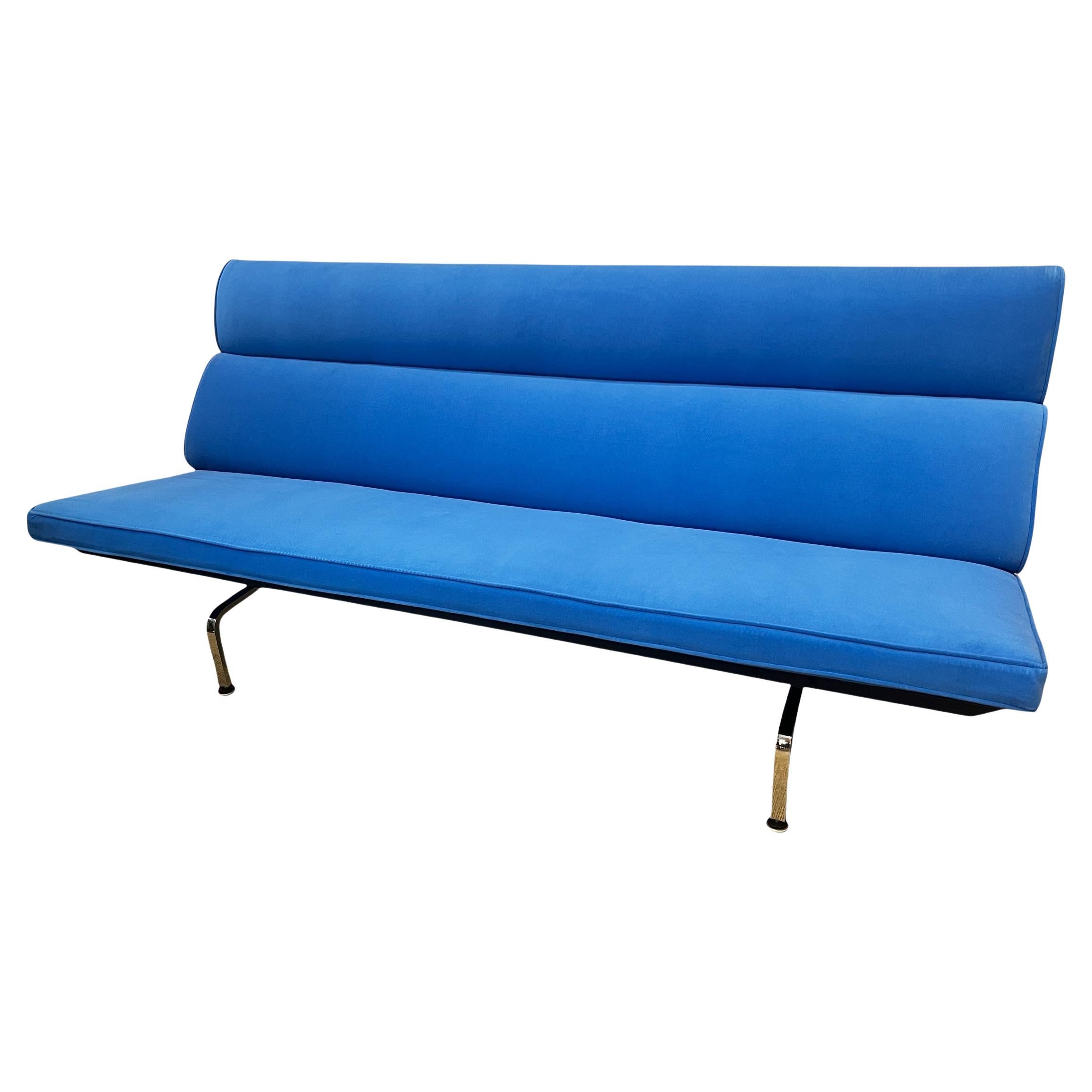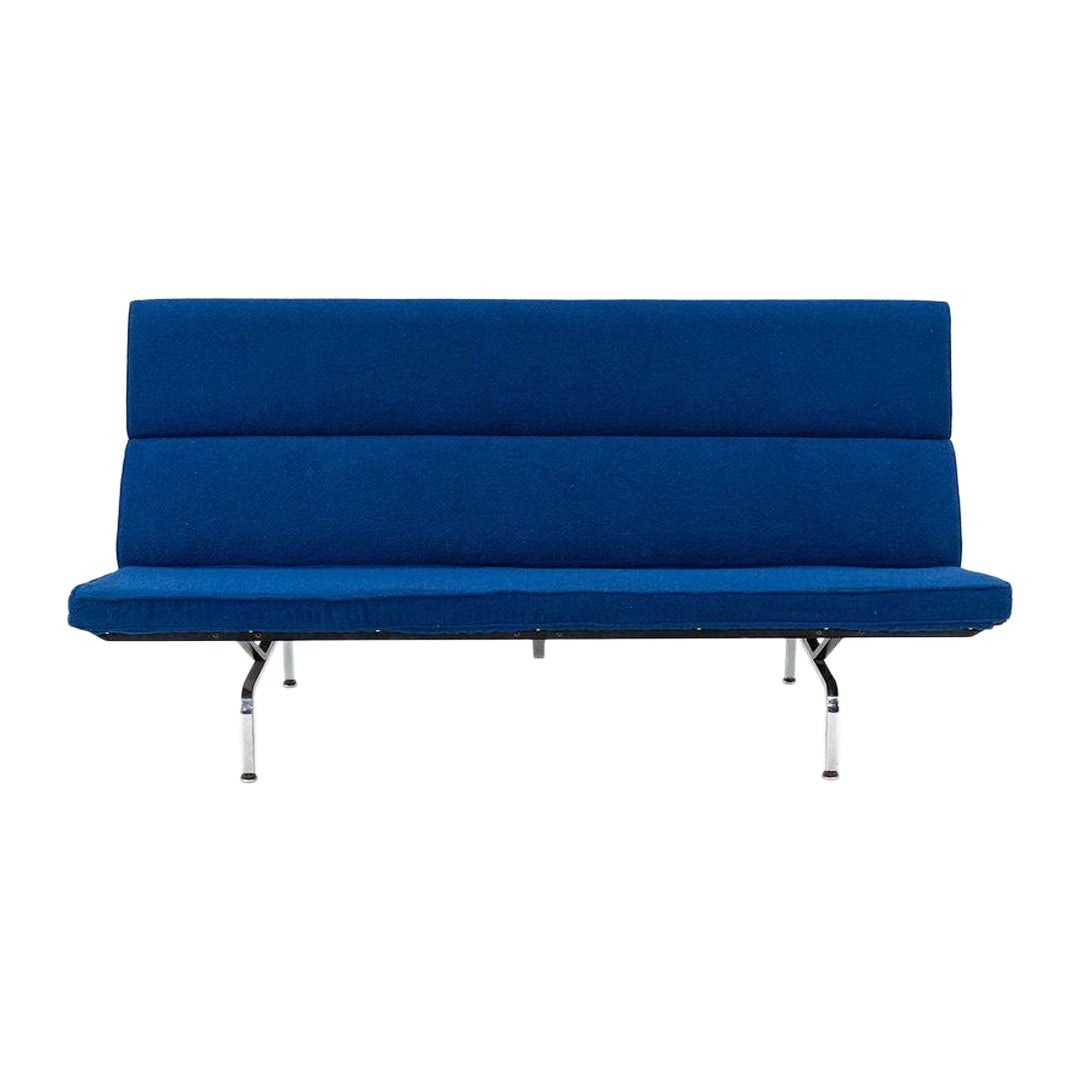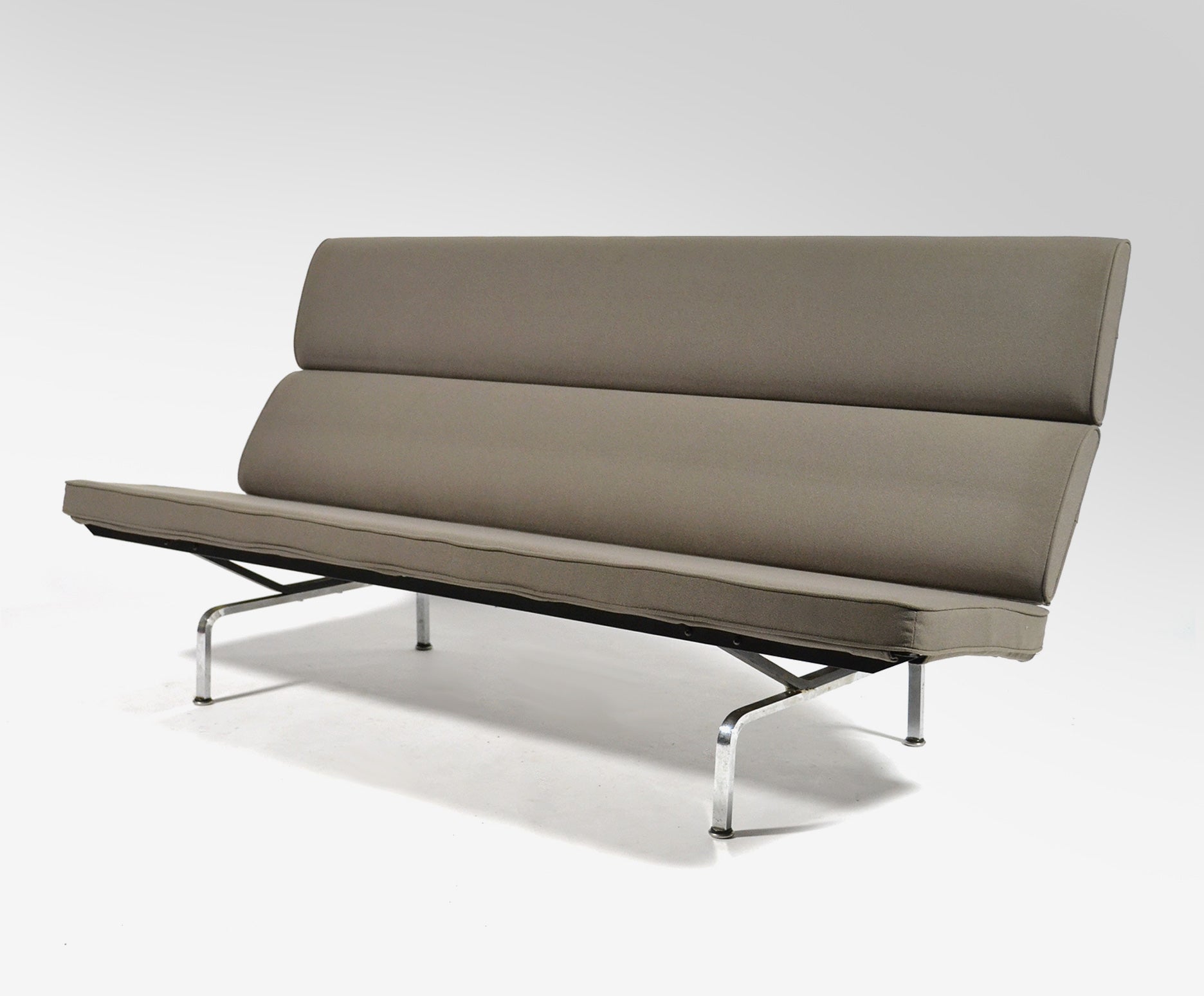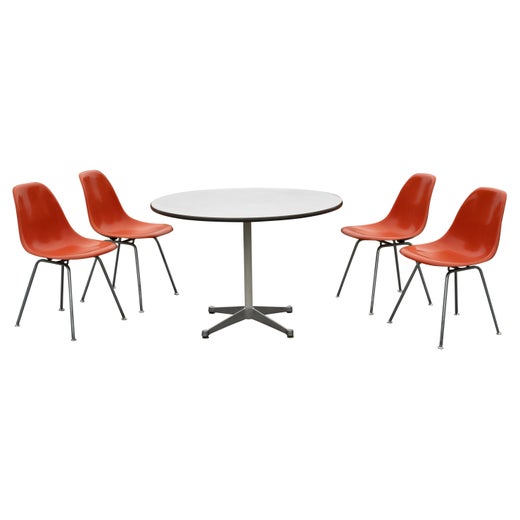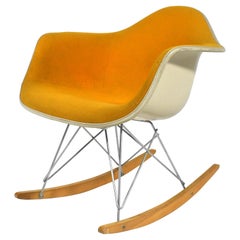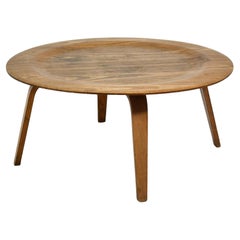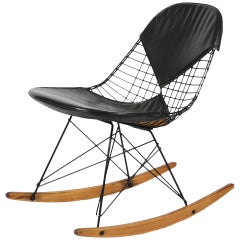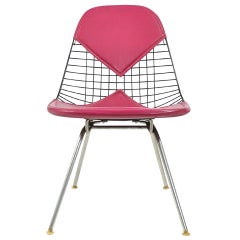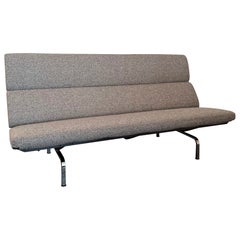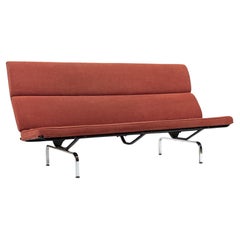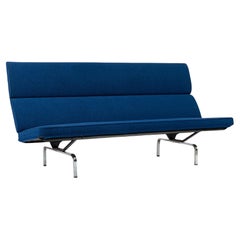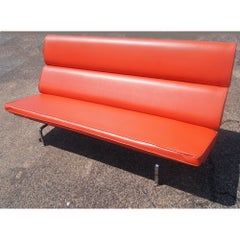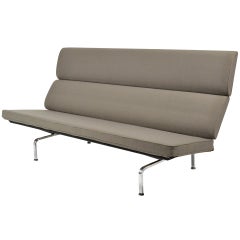
Early Eames Sofa Compact by Herman Miller
View Similar Items
Early Eames Sofa Compact by Herman Miller
About the Item
- Creator:Herman Miller (Manufacturer),Charles and Ray Eames (Designer)
- Design:
- Dimensions:Height: 35 in (88.9 cm)Width: 72.5 in (184.15 cm)Depth: 30 in (76.2 cm)Seat Height: 16 in (40.64 cm)
- Style:Mid-Century Modern (Of the Period)
- Materials and Techniques:
- Place of Origin:
- Period:
- Date of Manufacture:1950s
- Condition:
- Seller Location:Highland, IN
- Reference Number:1stDibs: LU90911192556
Eames Sofa Compact
Set on a simple metal frame with a seat that extends just 2.5 feet from the wall — yet comfortably seats three adults — the Eames Sofa Compact, created by visionary American designers Charles and Ray Eames (1907–78; 1912–88), is a prime example of the pair’s continual exploration of new ways to achieve comfort with minimal materials.
In 1949, the Eameses built the Eames House, their Pacific Palisades home and studio and a building that would become both a breeding ground for fresh design ideas and a real-time example of modern living.
The home was conceived as part of a challenge put forth by Arts & Architecture magazine to develop low-cost modern housing in Los Angeles, an idea that aligned nicely with the efforts the Eameses had been making in affordable furniture for mass production. The sofa they designed to fit neatly into an alcove in the house would serve as a model for the Eames Sofa Compact, which would be manufactured by Herman Miller within the subsequent several years.
By the time the Eameses moved into Case Study House No. 8, as it is officially known, they had both graduated from Cranbrook Academy of Art, the esteemed art school and launching pad for a multitude of design luminaries (their peers included Florence Knoll and Eero Saarinen), and moved to Los Angeles. In their first apartment there, the couple began experimenting with bent and molded plywood using their “Kazam! Machine,” a device that pressed strips of wood into moldable pieces, allowing for increased flexibility in shape for wood furniture, such as their DCW dining chair.
In the decades that followed, the Eameses continued to experiment with new methods for producing furniture quickly and cheaply. The first prototype for the Sofa Compact was completed in 1951 with a metal frame and folding back. It was designed to pack flat for easy shipping. In 1954, the final version of the sofa went into production through Herman Miller, which offered it in a variety of upholstery options.
Although the sofa’s seat is thin, its ergonomic shape and firm pads of urethane foam make it feel much more plush than it appears. Today the Eameses are among Herman Miller’s best-known furniture designers, and the manufacturer offers the Sofa Compact in three colors.
An early version of the sofa still sits in the Eames House, now a National Historic Landmark. It’s draped in a blanket — an apt metaphor for the Eameses’ creation of modernism that was never cold.
Charles and Ray Eames
Charles Eames and Ray Eames were the embodiment of the inventiveness, energy and optimism at the heart of mid-century modern American design, and have been recognized as the most influential designers of the 20th century. The Eameses were lovers of folk craft who had a genius for making highly original chairs, tables, case pieces and other furniture using traditional materials and forms.
As furniture designers, filmmakers, artists, textile and graphic designers and even toy and puzzle makers, the Eameses were a visionary and effective force for the notion that design should be an agent of positive change. They are the happy, ever-curious, ever-adventurous faces of modernism.
Charles Eames (1907–78) studied architecture and industrial design. Ray Eames (née Beatrice Alexandra Kaiser, 1912–88) was an artist, who studied under the Abstract Expressionist painter Hans Hofmann. They met in 1940 at the Cranbrook Academy of Art in suburban Detroit (the legendary institution where Charles also met his frequent collaborator Eero Saarinen and the artist and designer Harry Bertoia) and married the next year.
His technical skills and her artistic flair were wonderfully complementary. They moved to Los Angeles in 1941, where Charles worked on set design for MGM. In the evenings at their apartment, they experimented with molded plywood using a handmade heat-and-pressurization device they called the “Kazam!” machine. The next year, they won a contract from the U.S. Navy for lightweight plywood leg splints for wounded servicemen — vintage Eames splints are coveted collectibles today; more so those that Ray used to make sculptures.
The Navy contract allowed Charles to open a professional studio, and the attention-grabbing plywood furniture the firm produced prompted George Nelson, the director of design of the furniture-maker Herman Miller Inc., to enlist Charles and (by association, if not by contract) Ray in 1946. Some of the first Eames items to emerge from Herman Miller are now classics: the Eames chair, the LCW, or Lounge Chair Wood, and the DCM, or Dining Chair Metal, supported by tubular steel.
The Eameses eagerly embraced new technology and materials, and one of their peculiar talents was to imbue their supremely modern design with references to folk traditions.
Their Wire chair group of the 1950s, for example, was inspired by basket weaving techniques. The populist notion of “good design for all” drove their molded fiberglass chair series that same decade, and also produced the organic-form, ever-delightful La Chaise. In 1956 the Eames lounge chair and ottoman appeared — the supremely comfortable plywood-base-and-leather-upholstery creation that will likely live in homes as long as there are people with good taste and sense.
Charles Eames once said, “The role of the designer is that of a very good, thoughtful host anticipating the needs of his guests.” For very good collectors and thoughtful interior designers, a piece of design by the Eameses, the closer produced to original conception the better, is almost de rigueur — for its beauty and comfort, and not least as a tribute to the creative legacy and enduring influence of Charles and Ray Eames.
The original Eames furniture for sale on 1stDibs includes chairs, tables, case pieces and other items.
More From This Seller
View AllVintage 1950s American Mid-Century Modern Rocking Chairs
Zinc
Vintage 1950s American Mid-Century Modern Coffee and Cocktail Tables
Ash
Vintage 1950s American Mid-Century Modern Rocking Chairs
Steel
Vintage 1960s American Mid-Century Modern Lounge Chairs
Steel
Vintage 1950s American Mid-Century Modern Dining Room Chairs
Aluminum
Vintage 1950s American Mid-Century Modern Dining Room Chairs
Steel
You May Also Like
Mid-20th Century American Mid-Century Modern Sofas
Steel, Chrome
Late 20th Century American Mid-Century Modern Sofas
Aluminum, Steel, Chrome
Vintage 1970s American Mid-Century Modern Sofas
Steel, Chrome
Vintage 1960s American Mid-Century Modern Sofas
Other
Vintage 1970s American Mid-Century Modern Sofas
Steel, Chrome
Vintage 1980s American Modern Sofas
Steel
Recently Viewed
View AllRead More
The 21 Most Popular Mid-Century Modern Chairs
You know the designs, now get the stories about how they came to be.
A Guide to Herman Miller’s Most Iconic Furniture
The prolific manufacturer has partnered with many of the world’s top designers since opening its doors in 1923. Here are some of the company’s greatest hits, which helped transform the American home and office.
